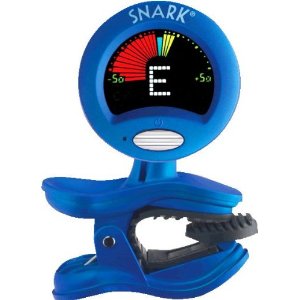 Recently, I came across a good deal at my favorite guitar shop, Guitar Syndicate, on an accessory that I have been wanting for a long time: A looper.
Recently, I came across a good deal at my favorite guitar shop, Guitar Syndicate, on an accessory that I have been wanting for a long time: A looper.Definition:
Loopers are pedals that record you playing a track and play it back for you on either a loop or a single run through. The one that I picked up was a used DigiTech JamMan, but you can also find ones by Boss, Line6, and most major brands of effects.
My Defense:
Now, those of you who know me know that I sway towards the acoustic and natural sound for my playing. As a general rule, I don't like using pedals unless it is absolutely necessary. In some cases, pedals take what might be a nice sound and make noise (but there are some awesome things pedals can do if you let them, I just don't spend the time or money on it).
That all being said, this is not what I would call an effects pedal by any means. The sound you put into a looper is what comes out on the other side.
Use 1: Practicing
For practice, loopers are great for creating a backing track that you can hone your lead skills against. For us rhythm players, it also gives us a chance to hear what our comping sounds like and evaluate how effective we are. In addition, you can record an entire song you play through and listen back to how it sounds.
Use 2: Live Shows
Live, loopers can be a solo instrumentalists best friend. A select few players out there have the chops (or even the ability to get the chops) to be able to simultaneously play both their rhythm and lead parts on the same guitar at the same time. (We call these players gods and do our best not to be smited by them.) However, for the rest of us, loopers can give us the opportunity to play leads and solos in a gig without needing to hire a backup band.
This is because loopers have a handy feature of being able to record on the fly and play back instantly. It takes practice to get good at it, but a well rehearsed player can do amazing things with these. I've heard of one soloist laying in multiple layers of guitar to the tune "Hotel California" where by then end he has five different layers on the same loop going at the end of the song!
Now, you may think of the above as cheating, but believe me: I've seen it done and it in no way distracts from the show. Good players are good players and this type of tool in their gig setup only promises an even better show for the audience.
Use 3: Composition
I don't do a lot of song writing (working on that one), but loopers can also help a lot with this. What happens to me a lot is that I start playing or singing something that sounds awesome, then I have an instant memory wash where I can't remember it. The JamMan that I picked up has a mic input which allows you to record your voice as well. So, if I was recording when I played that little diddy I've worked on, I would be able to go back and add to it. Not to mention, after I have chorded out I can go back and figure up melodies and bass lines later.
Conclusion
All in all, a looper can be a great tool for your set up. They do require you have an amp and some way of getting the music into the looper (pickup on your instrument or a microphone), but aside from that small limitation, it can be your best friend.
















